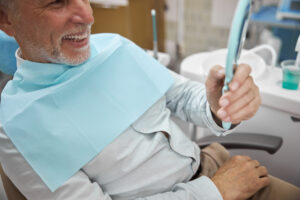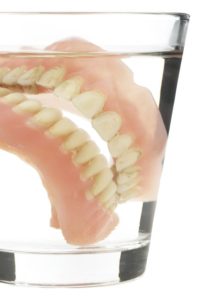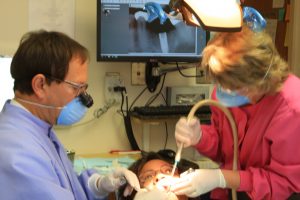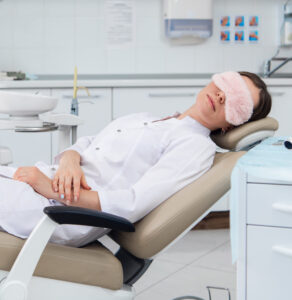Header logo
header top contact widget
Arthritis (RA)
It’s Flu Season – Why You Should Keep Your Oral Health In Tip-Top Shape.
Posted on Oct 16, 2023 by William J. Claiborne, DDS MS
It’s cold and flu season. Now having weathered the worst pandemic Americans have ever experienced, a new emphasis has taken hold for the need to have flu vaccines and the latest Covid booster.
Vaccines, of course, do not fully eliminate the potential to acquire these health conditions. While they lower the chances of their development, the immune system still relies on our own actions. This includes taking measures to avoid their development in the first place, such as frequent handwashing, eating a healthy diet, mask-wearing in crowds for vulnerable populations, etc.
We learned much about the immune system during the Covid pandemic. And, the need for keeping oral health in good condition became more clear than ever.
During the worst of the outbreak, a 2020 study found that individuals with gum disease who contracted COVID-19 were 9 times more likely to die. And, the study showed that COVID patients who already had periodontitis (the advanced form of gum disease) were 3 times more likely to end up in intensive care or on a ventilator.
Evidence shows, too, that avoiding dental care may actually increase the potential to contract the virus. And, poor oral health can increase its severity, and even fatality rates.
https://onlinelibrary.wiley.com/doi/10.1111/jcpe.13435
This is not only a concern for U.S. citizens, it’s a worldwide wake-up call. About 50% of the world’s population over the age of 30 suffer from periodontitis. Americans aren’t in much better shape – with over 47% having some form of gum disease.
Because gum disease can begin without obvious symptoms, or be present without having pain, it can be easily ignored. This allows the disease to progress further.
This is why dental care is deemed by Congress as “essential healthcare,” as it supports the need for preventive measures for gum disease and tooth loss. As a periodontist, I believe it is also important that Americans understand the signs and symptoms of gum disease as well as the overall health risks it brings.
Although gum disease can exist without obvious indication (typically in the early stage known as gingivitis), warning signs of gum disease usually begin with swollen and tender gums that bleed easily when brushing teeth.
As it worsens, the healthy pink hue of gums darkens to more of a red or purple color and breath odor is persistently bad. The gums begin to loosen their strong grip around the base of teeth, allowing infectious bacteria to reach bone structures that support tooth roots. In advanced stages, pus pockets form near the base of some teeth and gum tissues become spongy in texture.
The bacteria of periodontal disease don’t just damage oral health. This is where there is so much concern throughout the healthcare fields.
Through weakened oral tissues, the bacteria can enter the bloodstream and trigger inflammatory reactions. These reactions can worsen some serious health conditions and even activate others. Research has found correlations between these bacteria and heart disease, stroke, diabetes, arthritis, some cancers (including pancreatic), preterm babies, erectile dysfunction, and Alzheimer’s disease.
With such serious correlations, it should be common knowledge that oral wellness is a necessary part of maintaining good overall health. However, this isn’t necessarily the case. A report commissioned by Delta Dental Plans Association recently revealed concerning information regarding age groups and perceptions of oral health.
With over 1,000 online participants, 87% listed their priority for maintaining proper oral care was to save money or avoid unexpected expenses. Two-thirds of the group listed their commitment to at-home dental hygiene being to avoid tooth decay and gum disease. Yet, only 79% of adults stated they brushed their teeth twice a day with only 33% claiming to floss daily.
In reviewing age groups, the report found that baby boomers (those born between 1946 – 1964) understand there is a strong link between their oral and overall health but are less aware than other generations about the connection between poor dental health and chronic diseases (such as arthritis and diabetes).
Those listed in the Generation Z group (born between 1997 – 2012) showed less commitment to their oral health as the “boomers,” but were more focused on eco-friendly and nontraditional oral care products. Only 76% of Generation Z agreed that oral health is closely connected to overall health.
If you wear dentures or partials, keeping them clean is an important measure to take to avoid getting sick. Why?
One study (published in the Journal of The American Dental Association) assessed bacteria levels of the porous material that make up the gum base of dentures and partials. In the mouth, it becomes coated with a sticky bacteria known as biofilm.
One study found that wearing dentures while sleeping doubles the risk of pneumonia in elderly adults. (https://www.ncbi.nlm.nih.gov/pmc/articles/PMC4541085/)
It has also been found that this biofilm can harbor MRSA or bacteria that is resistant to antibiotics. It was also found that the bacteria in the biofilm doesn’t just stay in the mouth. It can be inhaled into the lungs where infections become much more difficult to treat. (https://www.nbcnews.com/healthmain/dirty-dentures-dangerous-mrsa-may-be-lurking-dentists-say-662637)
Regardless of age, Americans must maintain a healthy smile in order to support their immune systems. Research shows that oral bacteria are also connected to gut health, so keeping bacteria levels in the mouth in check can go a long way in healthy benefits far beyond the mouth.
For those who have avoided regular dental care due to dental fear or anxiety, we offer several comfort options, including oral and IV sedation.
Oral sedation is a pill that helps patients relax. I.V. sedation (also known as ‘twilight sleep’) places the patient in a deeper sleep state and erases memory of the procedure. It is administered by a doctor of anesthesiology for optimal comfort and safety with patients closely monitored with advanced safety equipment throughout treatment.
Call 828-274-9440 to arrange an examination appointment or to learn more about our Asheville periodontal dental office.
Oral Health & Tooth Loss Within America’s Aging Population
Posted on Sep 18, 2023 by William J. Claiborne, DDS MS
There are currently 54.1 million U.S. adults ages 65 and over; a number that is expected to grow to 95 million by 2060.
In 1900, the percentage of American adults over the age of 65 was just 4.1%. Today, that number has grown to nearly 16%. By 2040, the elderly adult population is estimated to be more than double the senior population of the year 2000.
https://www.aplaceformom.com/caregiver-resources/articles/elderly-nursing-home-population
Many baby boomers (Americans born between 1946 – 1964) will keep their teeth longer than any generation before, yet they continue to experience a preventable decline in oral health.
Common risk factors such as smoking, poor diet, a reduced capacity to care for one’s teeth and obtain professional dental care, and biological mechanisms – such as low salivary flow caused by medications – may contribute to tooth decay and tooth loss.
Periodontitis (advanced gum disease) is a prevalent oral disease in older adults. It is typically marked by inflammation of the gums and supporting structures of the teeth, resulting in sore and bleeding gums as well as painful chewing problems. Loss of the supporting structures of the teeth (including supportive bone) results from an imbalance of bacteria that exist in the space between the teeth and the gums. This leads to an inflammatory response that develops into periodontal disease.
As teeth lose support from their diseased foundation, mobility and tooth drifting can occur in addition to abscesses, which can ultimately result in tooth loss. As the disease intensifies, bone loss around affected teeth can advance with a worsening infection that can lead to serious health problems far beyond the mouth.
Periodontal disease is associated with chronic diseases such as cardiovascular disease, diabetes, respiratory disease, and dementia. Along with other challenges to maintaining good health, the prevalence of any periodontitis among older adults is high. Three in five older adults are affected, with prevalence higher in men and persons with low incomes. Four in five older adults who smoke cigarettes have some form of periodontitis.
The loss of all natural teeth, known as edentulism, reduces quality of life because it interferes with the ability to eat, speak, and feel comfortable among other people. Tooth loss also affects a person’s ability to consume nutritious food and can impact social involvement with others while consuming food.
Overall, 17% of adults 65 and older are edentulous. Fortunately, edentulism has declined over the years among older adults aged 65 to 74, from about 50% in the 1960s to 13% today.
https://www.cdc.gov/oralhealth/pdfs_and_other_files/Oral-Health-Surveillance-Report-2019-h.pdf
Prevalence of total tooth loss among adults ages 65 and over is higher in both North and South Carolina than many other states, which is in the 16.6 – 26.3 percentage range. This compares to states like Illinois, Wisconsin and Utah, which are some states in the 6.2 – 11.3 percent range.
https://www.ncbi.nlm.nih.gov/books/NBK578296/figure/ch6.fig6/?report=objectonly
Having fewer than nine teeth is considered severe tooth loss and can cause major difficulties in eating a healthy diet of fresh and nutritious fruits, protein-rich meats and sufficient fiber. Without chewing comfort, strength and stability, food choices can result in either weight loss or obesity. Extensive tooth loss also detracts from physical appearance and impedes speech, another challenge to social contact and job prospects. This can also inhibit intimacy, lower self-esteem, and impact overall quality of life.
https://www.nidcr.nih.gov/sites/default/files/2017-10/hck1ocv.%40www.surgeon.fullrpt.pdf
Another challenge for older adults is orofacial pain. Orofacial pain in older adults can originate inside the mouth from tooth-related or gum infections. It may also originate outside the mouth, such as pain in the jaw joint area, or face and cheeks. Orofacial pain often results from ill-fitting dentures or a microbial infection causing an inflammatory reaction known as denture stomatitis (an oral yeast or fungus condition)
Older adults also struggle with “dry mouth.” Dry mouth is surprisingly common – an estimated 35 million U.S. adults may have this condition, known as xerostomia. Common causes include medications, autoimmune disease, systemic diseases, and as a result of head and neck irradiation.
Drugs are by far the most common risk factors for chronic dry mouth. Nearly 9 in 10 (89%) adults aged 65 and older take prescription medicine. More than half (54%) report taking four or more prescription drugs. The drugs most consistently implicated in “dry mouth” are antidepressants, diuretics, beta blockers, bronchodilators, and antihistamines.
High-risk behaviors are generally less common among older adults than in younger age groups. About 9% of those 65 years and older reported that they were current smokers, and 8% reported excessive alcohol consumption (having five or more drinks in one day at least once in the past year). Cannabis use also is on the rise among seniors although it remains less than 5%.
The problems associated with poor oral health and tooth loss extend greatly to other areas of the body. Oral bacteria and their toxins can spread into the bloodstream through ulcerated or inflamed tissues during chewing, routine oral hygiene, and dental procedures. In weakened gum tissues, even the act of tooth brushing can open up entry points for bacteria plaque and gingival inflammation in the bloodstream.
In addition, the presence of oral bacteria or their toxins may induce inflammatory responses, which can prompt insulin resistance. Oral bacteria can reach tissues in the lung, heart, gut, placenta, joints, and even the brain. They have been associated with infective endocarditis, and chronic inflammation may contribute to systemic conditions such as cardiovascular disease and diabetes.
Obviously, there are many causes for oral health challenges, all having a detrimental effect on quality of life to some extent. We want to help the residents of Western North Carolina enjoy their retirement years with a healthy, confident smile and oral health that supports good overall health.
First, know the signs and symptoms of periodontal (gum) disease, which include:
• Swollen or puffy gums
• Gums that turn red, dark red or dark purple gums
• Gums that are tender or bleed easily
• Seeing blood when brushing or flossing
• Persistent bad breath
• Pus pockets that form between teeth and gums
When periodontal disease exists, it is important to know that this will not go away without treatment. Once this infection is underway, it will only worsen, leading to more painful symptoms and even eventual tooth loss.
If you have signs of gum disease, see a periodontal specialist as soon as possible. In addition to lowering the risk of tooth loss, a periodontist can help you lower the risks of gum disease’s infectious bacteria in the bloodstream, which research has linked to serious (and even deadly) health problems.
Call our Asheville periodontal dental office to schedule a consultation. If fear or anxiety has prevented you from regular dental visits, we can discuss several options (including oral or IV sedation) to provide comfortable, relaxed appointments. Call 828-274-9440.
Don’t Allow Dental Fear or Anxiety To Ruin Your Smile
Posted on Aug 23, 2023 by William J. Claiborne, DDS MS
It’s a proven fact that your oral health – the wellness of your teeth and gum tissues – is an influencing contributor to your overall health. For decades, researchers have studied the concerning risks, and alarming connections, between oral health and a number of serious diseases in the body.
The leading culprit in this scenario are the bacteria of advanced gum disease, known as periodontitis. Gum disease breeds bacteria that are inflammatory in makeup. Once they enter the bloodstream (through tears in disease oral tissues), studies have found these potent bacteria can trigger the onset of serious diseases, such as:
• Heart disease
• Stroke
• Alzheimer’s disease & Dementia
• Some cancers (including lung and pancreatic)
• Pre-term babies
• Diabetes
• Arthritis
• High blood pressure
• Erectile Dysfunction (ED)
As research continues, more and more findings are bringing to light just how connected the mouth is to the efficient operation of the immune system. During the Covid pandemic, it was well publicized that those most vulnerable to the virus were those who were immune compromised.
One study, conducted between February and July 2020, analyzed two groups of 568 total patients with severe COVID-19 complications (death, ICU admissions or assisted ventilation). Periodontal conditions in the two groups were analyzed. Of the patients studied, those with periodontitis were three times more likely to experience COVID‐19 complications including death, ICU admission, and the need for assisted ventilation.
For years, the cost of dentistry has been credited for preventing millions of American adults from having regular dental care. This was recently studied in a nationally representative survey of 5,682 adults. In this, researchers looked at knowledge, attitudes, experiences, and behaviors related to oral health.
Results from the survey show that lack of insurance is a leading reason for avoiding dental care or delaying recommended care (often until something becomes so painful that the individual is forced into a dentist’s chair seeking relief).
The study showed that 16% of adults without dental insurance admitted that they had not seen a dentist in more than five years compared to just 5% of adults with dental insurance. Forty percent of adults without dental insurance reported cost was the reason they hadn’t visited the dentist in the past two years, compared to 14% of adults with dental insurance.
Yet, excruciating pain from a dental problem can be the impetus for setting aside the cost. The same is true for people who have fear or anxiety associated with dental care.
About 36% of people in the U.S. have a fear of dental treatment, with 12% having an intense fear, known as dentophobia. Dental phobics are people who avoid going to the dentist at all. Dental fear is more common in females than males, with an estimated 3% of men and almost 5% of women having dentophobia.
Reasons for these fears include:
– Fear the anesthetic will not work or be sufficient to fully numb the pain
– Blood makes some people feel afraid or panicky about bleeding during a dental procedure.
– People may fear choking or gagging and not being able to breathe or swallow.
– For individuals who have had a poor experience with a dentist in the past, they may associate negative feelings with their dentist.
– Feeling pain from the procedure or recovery
– Some people are highly fearful of needles.
– The noise from drills and dental instruments used by a dentist or dental hygienist can create high levels of anxiety for some people.
– The same is true when it comes to certain smells that arise during dental treatment.
New Study Links Periodontitis and COVID‐19 Complications
At our Asheville NC periodontal dental office, we take patient comfort very seriously, and that goes for all patients at every appointment. We find that many patients have developed severe gum disease or had tooth loss because they were afraid of going to a dentist. This prevents people from having regular dental care, which allows small problems to become worse ones.
Many with dental fear or dentophobia avoid going to the dentist for years. And, these feelings may be more common than you know. When dental anxiety, dental fear and dentophobia are combined, it affects an estimated 70% of American adults. This unfortunate statistic is a likely reason for the high percentage of adults who suffer with some level of periodontal (gum) disease – over 47%.
As a Periodontist, my staff and I work diligently to pamper patients from the moment they enter. For certain procedures as well as for patients who prefer the addition of sedatives, we offer oral sedation as well as I.V. sedation (twilight sleep).
Oral sedation is a pill that helps patients relax. It also has an amnesiac effect, leaving most with little or no memory of treatment afterward.
I.V. sedation places the patient in a deeper sleep state, also erasing memory of the procedure. It is administered by a doctor of anesthesiology, overseen by Dr. Brad Stone, a Medical Doctor (MD) and a board certified Anesthesiologist & Pediatric Anesthesiologist.
https://www.biltmoreperiodontics.com/comprehensive-care-team/
With both sedation options, patients are closely monitored with advanced safety equipment throughout treatment.
If fear has caused you or someone you know to avoid dental visits, please arrange a consultation with us. In our Western NC periodontal dental office, you’ll find a warm, respectful atmosphere where your concerns are understood. During this time, we can discuss comfort options that may be best for your individual needs along with estimated costs.
Call 828-274-9440.
Beware of Hidden Contributors to Gum Disease, Tooth Loss
Posted on Aug 19, 2023 by William J. Claiborne, DDS MS
Decades ago, oral health was something many people took lightly, often waiting until something hurt to see a dentist. The fierce pain of a cavity or abscess or the sharp jolt of something hot or cold on an area of gum recession were motivators to for a dental visit.
However, Americans are now realizing how very important their oral health is in how it relates to overall health.
The correlation lies with bacteria that live within the gum tissues. While all mouths contain “good” and “bad” bacteria, research has determined that the bad type can cause problems within and outside of the mouth.
The bad bacteria are inflammatory. An accumulation of these inflammatory bacteria are what lead to periodontal (gum) disease. Gum disease is the nation’s leading cause of adult tooth loss. Additionally, advanced periodontal disease – periodontitis – can trigger or even worsen serious health condition far beyond the mouth.
Although gum disease can begin without any obvious symptoms, once it exists, progression occurs in three stages, which are:
• Gingivitis – As the initial stage of gum disease, inflammation is triggered by plaque buildup at the gum line. When daily brushing and flossing fail to thoroughly remove plaque, toxins form that cause irritation to the gum tissues. Once signs emerge, they may include seeing blood in the sink when brushing or having sore, swollen gums. At this stage, however, damage may be reversed with prompt response.
• Periodontitis – As the disease advances, the bone structures and fibers that support teeth are damaged by the destruction of infectious oral bacteria. At this stage, inflamed gums form pockets below the gum line, filling with bacteria-laden plaque.
• Advanced Periodontitis – In the advanced stage of gum disease, fibers and bone supporting natural teeth are destroyed. This can cause teeth to shift or loosen, requiring aggressive treatment to prevent tooth loss. Eventually, some teeth may require removal.
As devastating as tooth loss can be to one’s overall health, the bacteria of gum disease can enter the bloodstream. Research has shown this infectious bacteria can trigger inflammatory reactions elsewhere in the body, correlating to heart disease, stroke, high blood pressure, some cancers (including lung and pancreatic), diabetes, arthritis, impotency, preterm babies, Alzheimer’s disease and more.
Obviously, people should be highly-committed to the care of their oral health. Yet, statistics in America along these lines are not impressive. The Center for Disease Control’s Division of Oral Health cites that 1 out of every 2 American adults 30 and over has periodontal disease. They also shared that periodontal disease is higher in men than women (56.4% vs. 38.4%) with high prevalence rates among smokers (64.2%) and adults 65+ (70.1%).
In addition to your twice-a-year dental check-ups and cleanings, there are other ways to support oral wellness between visits. One is in keeping the mouth moist, supporting sufficient saliva flow.
When saliva flow is insufficient, bacteria are able to accumulate and multiply rapidly. In addition to oral dryness as a part of the aging process, contributors can be consuming alcoholic beverages, caffeine, and as a side effect of many medications (both OTC and Rx).
One reason to keep your dental professionals aware of ALL the medications your take is in how they can interact with certain procedures, including numbing agents. For example, medications to reduce blood clotting, which lowers your risk for stroke and heart disease, can cause bleeding problems during oral surgery or periodontal treatment.
For those who take medications that help to strengthen bones, these have been associated with a rare but serious condition called osteonecrosis of the jaw. Simply put, it refers to death of the bone. The risk of these prescriptions is greater for those administered by injection or intravenously.
Osteonecrosis of the jaw commonly occurs after dental procedures (tooth extraction, implant placement). Over 90% of those who have experienced osteonecrosis are those who have taken the medication in repeated high doses due to cancer or other diseases.
However, 10% who experienced osteonecrosis were taking much lower doses, mostly intended to treat osteoporosis.
Certain medications also affect the ability to taste, including cardiovascular agents, central nervous system stimulants, non-steroidal anti-inflammatory drugs, respiratory inhalants and nicotine skin patches.
Some medications can also cause the development of oral sores, inflammation or discoloration of gum tissues in the mouth. These oral sores or discolorations may arise from taking medications for blood pressure, oral contraceptives and chemotherapy agents.
Dry mouth is a common side effect of a wide variety of medications, including prescriptive and over-the-counter. These include antihistamines, decongestants, painkillers, high blood pressure medications, muscle relaxants, drugs for urinary incontinence, anti-depressants and many others. Drying causes the soft tissues in the mouth to become inflamed and makes you more susceptible to infection. When saliva flow is depleted, your risk for tooth decay and gum disease increases.
Supplements that may seem unconnected to your oral health can actually effect your care more than you realize. It is important for your dentist to know if you take…
• Ginkgo biloba or evening primrose – These herbs can reduce your blood’s ability to clot, possibly leading to excessive bleeding during and/or after a dental procedure.
• St. John’s Wort – This herb, which is often taken to reduce anxiety, can interfere with the metabolism of other medications, including sedatives, antibiotics and anti-inflammatory drugs such as prednisone and Decadron. When combined with St. John’s Wort, these drugs can be less effective. On the other hand, narcotics such as codeine, Vicodin and oxycodone can become more potent when taken with St. John’s Wort. This can lead to sleepiness, lethargy and dizziness.
• Valerian – This herb has mild sedative effects. If your dentist prescribes drugs for anxiety or painkillers containing codeine, the effects of both together are greatly accentuated. This can lead to severe sleepiness, lethargy and dizziness that can last into the next day.
• Calcium and magnesium – When these supplements are combined with certain antibiotics, they can decrease the antibiotics being properly absorbed. This can compromise your ability to fight off infection.
As a periodontal specialist, I find that most cases of dry mouth are due to factors that can be easily controlled with simple changes. If you have delayed or avoided dental care, call 828-274-9440 to request a consultation, or begin with a thorough examination in our Asheville periodontal office.
And, if you are experiencing signs of gum disease, please know this disease will only worsen without treatment. The sooner you have treatment, the less involvement your treatment will likely be.
We offer the latest techniques, technology, and skills while always making patient comfort a top priority. If dental fear or anxiety are concerns, please make us aware of this when you call or at your initial appointment. In addition to our standard comfort features, we offer Oral and I.V. sedation (“twilight sleep”).
Recent Posts
Categories
Archives
- September 2024
- August 2024
- July 2024
- June 2024
- May 2024
- April 2024
- March 2024
- February 2024
- January 2024
- December 2023
- November 2023
- October 2023
- September 2023
- August 2023
- July 2023
- June 2023
- May 2023
- April 2023
- March 2023
- February 2023
- January 2023
- December 2022
- November 2022
- October 2022
- September 2022
- August 2022
- July 2022
- June 2022
- May 2022
- April 2022
- March 2022
- February 2022
- January 2022
- December 2021
- November 2021
- October 2021
- September 2021
- August 2021
- July 2021
- June 2021
- May 2021
- April 2021
- March 2021
- February 2021
- January 2021
- December 2020
- November 2020
- October 2020
- September 2020
- August 2020
- July 2020
- June 2020
- May 2020
- April 2020
- March 2020
- February 2020
- January 2020
- December 2019
- November 2019
- October 2019
- September 2019
- August 2019
- July 2019
- June 2019
- May 2019
- April 2019
- March 2019
- February 2019
- January 2019
- December 2018
- November 2018
- October 2018
- September 2018
- August 2018
- July 2018
- June 2018
- May 2018
- April 2018
- March 2018
- February 2018
- January 2018
- December 2017
- November 2017
- October 2017
- September 2017
- August 2017
- July 2017
- June 2017
- May 2017
- April 2017
- March 2017
- February 2017
- January 2017
- December 2016
- November 2016
- October 2016
- September 2016
- August 2016
- July 2016
- June 2016
- May 2016
- April 2016
- March 2016
- February 2016
- January 2016
- December 2015
- November 2015
- October 2015
- September 2015
- August 2015
- July 2015
- June 2015
- May 2015
- April 2015
- March 2015
- February 2015
- January 2015
- December 2014
- November 2014
- October 2014
- September 2014
- August 2014
- July 2014
- June 2014
- May 2014
- April 2014
- March 2014
- February 2014
- January 2014
- December 2013
- November 2013
- October 2013
- September 2013
- August 2013
- July 2013
- June 2013
- May 2013
- April 2013
- March 2013
- February 2013
- January 2013
- December 2012
- November 2012
- October 2012
- September 2012
- August 2012
- July 2012
- June 2012


